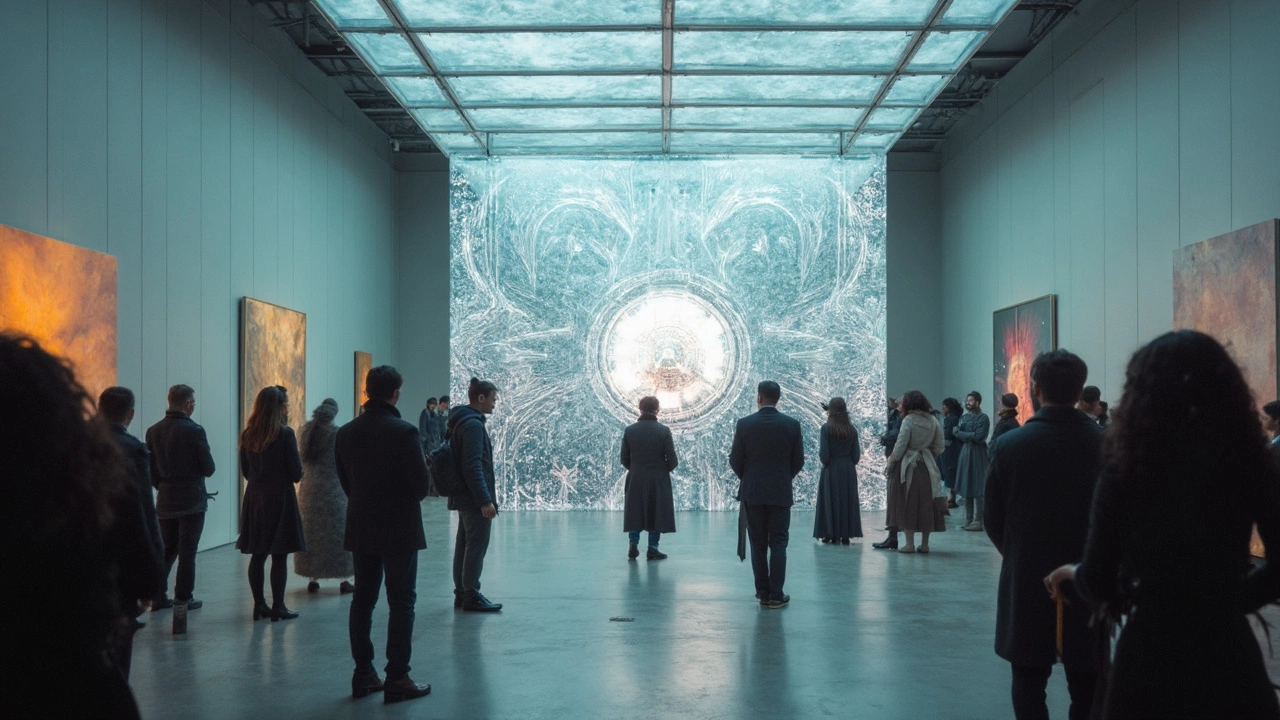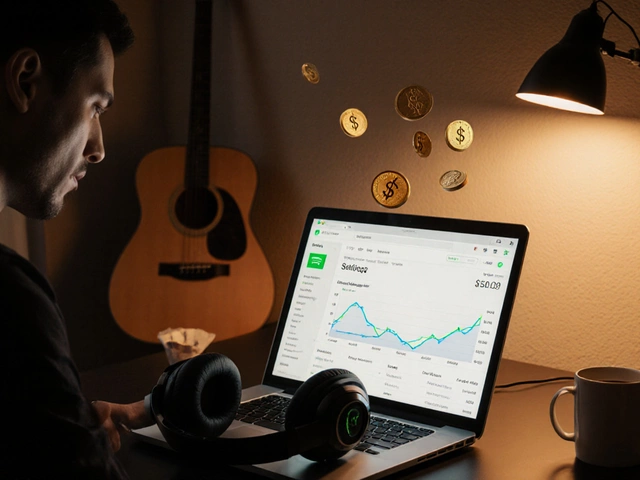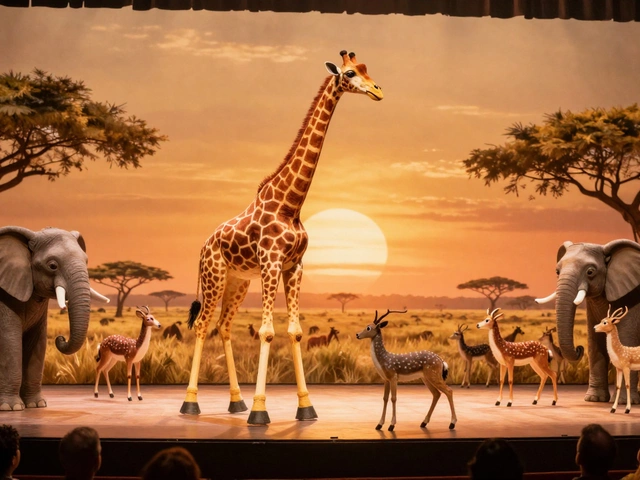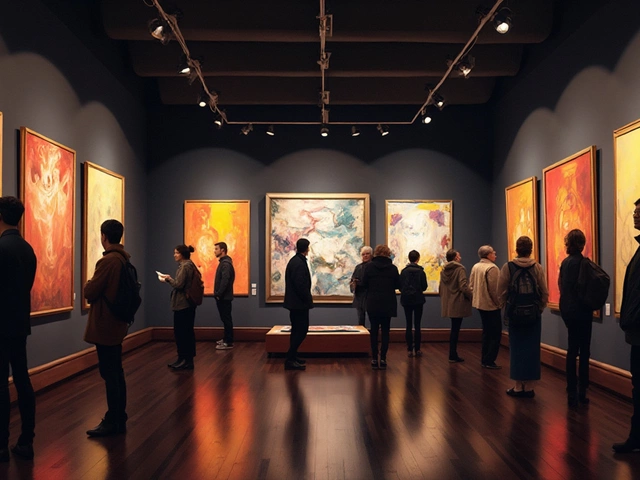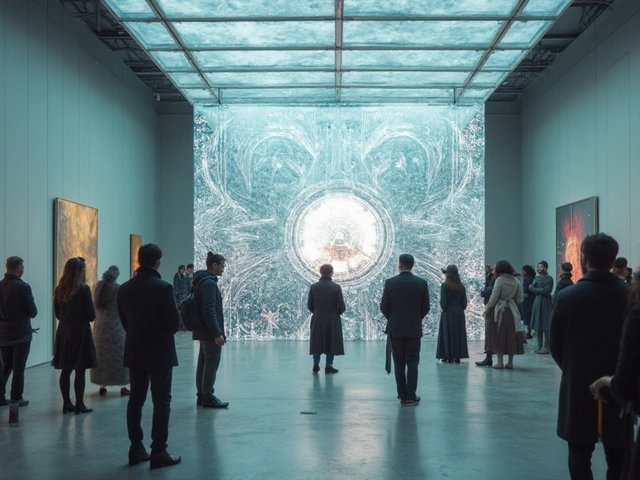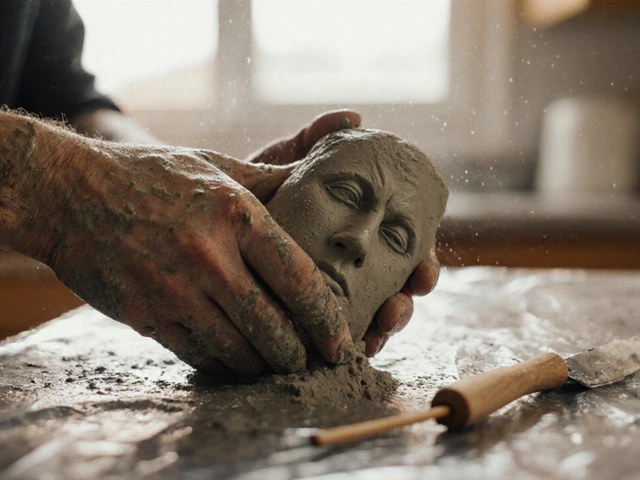Think 'modern art' and you might picture the radical paintings of Picasso or the abstract wonders of Kandinsky. But what if modern art isn't really 'modern' anymore? This term, once a beacon for the new and avant-garde, has transformed over time. Nowadays, the world of art is constantly shifting, with boundaries between older labels like 'modern' and newer terms like 'contemporary' getting hazy.
In today's art scene, the present is all about exploring fresh materials, digital advancements, and revolutionary ideas. Tech-savvy artists harness 3D printers, virtual reality, and even artificial intelligence to create content that's as diverse as a city skyline. From Instagram-worthy installations that blow your mind to digital artworks that question reality, the 'modern art' of 2025 isn't just cutting-edge—it's practically bleeding-edge.
But what's in a name? As the art world leaps forward, we often find the past tagging along. The overlap between 'modern,' 'contemporary,' and 'postmodern' art can be bewildering. But worry not. In the following sections, we'll break down how these terms relate to each other and what exciting trends are emerging today.
- Redefining Modern Art
- From Modern to Contemporary
- The Influence of Technology
- Key Movements Today
- Art's Future Directions
Redefining Modern Art
Ever thought about what makes modern art 'modern'? Originally, it kicked off in the late 19th and early 20th centuries as a reaction against traditional art forms. Artists rebelled with more experimental and abstract styles, leading the charge were figures like Picasso and Matisse.
But times change, and the art world isn’t static. Nowadays, when people say 'modern art,' they often really mean contemporary art. While modern art refers to works produced roughly from the 1860s to 1970s, contemporary art refers to the art of today—created by living artists.
The Blur Between Modern and Contemporary
The line can sometimes be confusing. For example, modern and contemporary art share a love for pushing boundaries and challenging norms. But contemporary art often interacts more with current tech and societal discourse. Stuff like digital art forms and immersive installations frequently come under this banner.
What's really cool is how artists are now blending past 'modern' ideas with cutting-edge tech. Many use digital tools to create art that feels fresh yet acknowledges historical influences. For instance, during the Art Basel Miami Beach in 2023, over 70% of the exhibits involved some level of tech integration, from augmented reality sculptures to AI-generated paintings.
Why Names Matter
So why do these terms matter? Institutions like museums, galleries, and auction houses often use these labels to categorize and price art. A piece labeled under a hot term like 'contemporary' might fetch a premium over something merely tagged as 'modern,' all due to perceived freshness and relevance to current audiences.
In a way, modern art's evolution is less about what's in a name and more about how artists interpret and adapt to our ever-changing world.
From Modern to Contemporary
The shift from modern art to contemporary art isn't just about dates; it's a radical change in how art is seen and created. Modern art, which largely took off in the late 19th century with movements like Impressionism, focused on breaking away from tradition and exploring new perspectives. Fast forward to the late 20th century, and contemporary art emerged, characterized by diverse practices that reflect a rapidly changing world.
Contemporary art often resonates with societal changes, addressing issues like technology, globalization, and identity. A famous example includes Banksy's thought-provoking street art, which challenges the status quo and stirs conversation. These pieces invite viewers not only to look but to think and engage.
"Art should comfort the disturbed and disturb the comfortable." — Banksy
But how did we get from modern to contemporary? It's a journey of evolving styles and ideas. While modern art focused more on abstraction and experimentation, contemporary art harnesses these elements and adds layers of interaction, sometimes incorporating media and performance into its arsenal.
Differences in Approach and Mediums
While modern artists embraced bold colors and abstraction, contemporary artists use an endless array of mediums. You might see performance pieces, digital art, or even art created by artificial intelligence tools. A significant part of contemporary art's charm lies in its unpredictability and variety.
| Era | Key Characteristics |
|---|---|
| Modern Art | Abstraction, experimentation, new perspectives |
| Contemporary Art | Diverse media, societal issues, interactive |
The boundaries between these two art forms can get pretty blurred. Many public galleries, like the Tate Modern in London, often showcase both side-by-side, emphasizing how one informs the other. Contemporary art challenges us to question what we see and understand it through fresh, often digital, lenses.
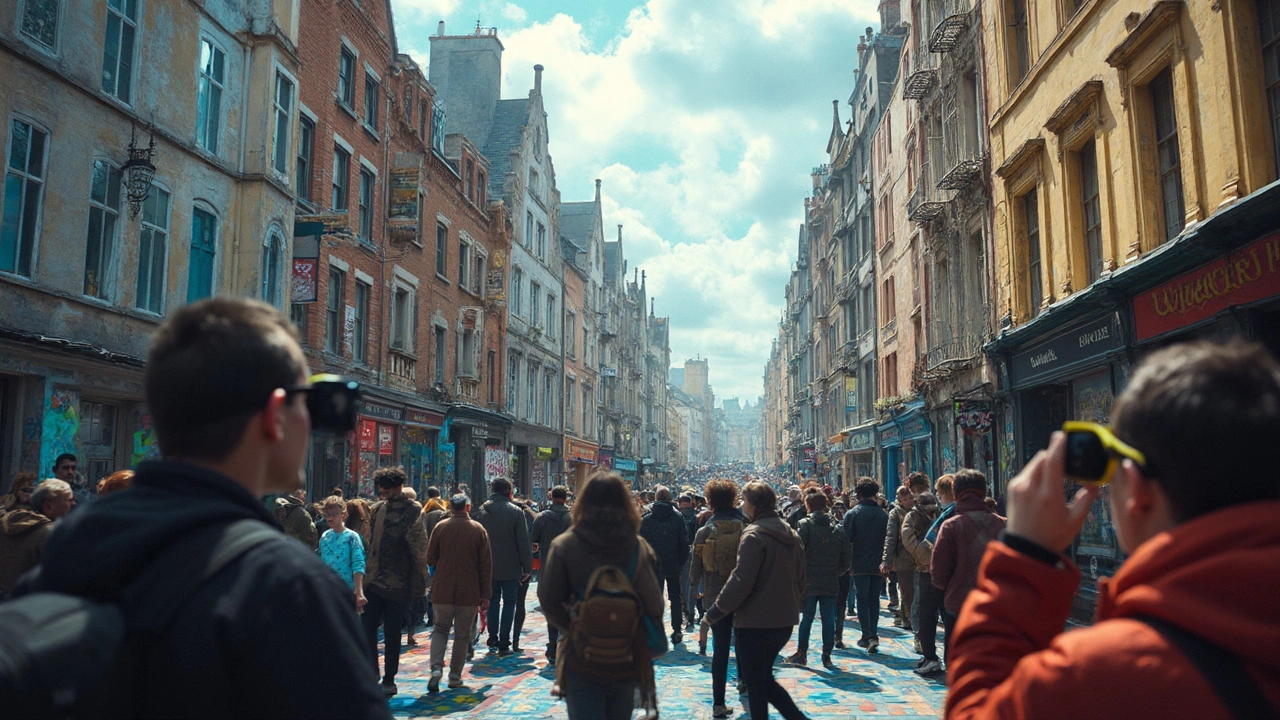
The Influence of Technology
In 2025, the landscape of modern art has been reshaped by technology in ways previously unimaginable. Artists are no longer confined to paintbrushes and canvas. Instead, they're diving into digital realms, manipulating pixels, code, and algorithms to craft extraordinary pieces that challenge our perceptions of art.
One major game-changer is the advent of 3D printing. This tech allows artists to transform digital designs into physical objects, blurring the lines between sculpture and digital art. Not only does it open up a world of possibility for intricate, previously impossible designs, but it also democratizes art creation. Imagine being able to print a sculpture as easily as printing a photograph!
Virtual Reality: A New Canvas
Virtual reality (VR) has also made significant headways in the art world. Instead of just viewing a piece of art, VR lets people step inside it. Picture walking into a painting and experiencing its colors and emotions up close. This dimension adds a level of engagement that's both immersive and interactive, making art a communal experience without boundaries.
Artificial Intelligence: The Unexpected Artist
Another fun development is the use of artificial intelligence (AI) in creating art. AI algorithms can analyze millions of artworks, detect patterns, and produce new pieces reminiscent of established human masterworks or entirely novel styles. While some debate whether AI-generated works count as 'art', there's no doubt it's a fascinating addition to the conversation.
These technological strides don't just change how art is created; they influence how art is consumed and sold. Take the rise of blockchain technology for authenticating and trading digital art, like NFTs (Non-Fungible Tokens), which hit the mainstream a few years ago. It's a revolution in art ownership, giving digital art the same credibility as traditional oil paintings.
In a survey from 2024, about 60% of modern artists reported regularly using digital tools as part of their creative process. This shift highlights the increasing role of technology in shaping not just today's modern art, but its future directions as well.
From digital brushes to virtual galleries, technology isn't just influencing art—it is art in new forms. Artists of today embrace this wave, continuously redefining what modern art means in a rapidly evolving digital age.
Key Movements Today
The current art scene is bustling with a variety of movements. As artists push boundaries, some new trends have gained traction, reflecting our changing society and technological advancements.
Post-Internet Art
As the name suggests, post-Internet art doesn't stop at just using the web as a tool—it's about how the digital world affects art and culture. It's kind of like looking at art through the lens of our screens. Artists explore how we live online and juggle this with tangible reality. They might use websites, social media, or digital simulations in craft.
Sustainable Art
With climate change on everyone's mind, sustainable art is a movement focused on eco-friendly materials. Artists in this field are thinking green by repurposing waste or using natural elements. It’s all about spreading awareness and starting conversations through creativity.
Immersive Installations
Immersive installations are those jaw-dropping experiences that take you right into the art piece itself. Sometimes, it even feels like stepping into a different universe. These artworks often use technology such as VR and AR to make everything more interactive. It's not just seeing—it's touching, hearing, and feeling the art.
| Movement | Core Idea |
|---|---|
| Post-Internet Art | Explores digital culture |
| Sustainable Art | Focus on eco-friendly practices |
| Immersive Installations | Interactive and sensory experiences |
Data Art
Data art takes numbers and figures to narrate a story or depict patterns in an artistic way. Think of it as art meeting the analytics world. Artists translate raw data into stunning visuals that make you see mundane information in a brand-new light.
These movements tell us a lot about where modern art is heading. They reflect our world's shifts and use creative means to give us a fresh perspective. It's an exciting time to be involved with art, whether you're admiring or creating it.
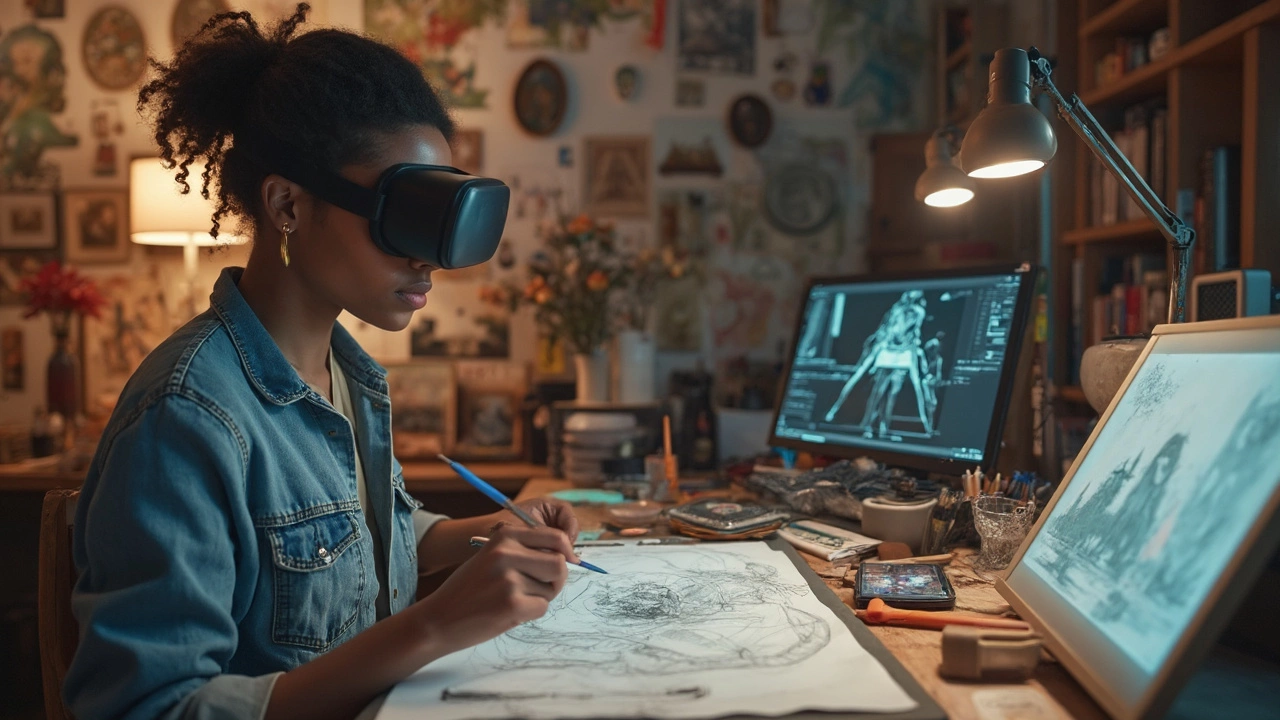
Art's Future Directions
Wondering where the art world is headed? Hang on—it's an exciting ride. As we barrel into 2025 and beyond, modern art isn't slowing down, especially with technology at its side. Think of AI generating paintings, or artists using blockchain to sell their digital works. All of this is shaking up traditional practices.
One clear direction is the integration of technology in art-making processes. Artists are increasingly blending tech tools with traditional mediums to create something altogether new. An enthralling example is the use of 3D printing. Artists like Joshua Harker and Sophie Kahn are creating sculptures that were once impossible to craft by hand.
The Role of Digital Platforms
Digital platforms are also reshaping the way art is shared and appreciated. Social media, like Instagram, gives artists instant access to a wide audience, breaking the geographic and socioeconomic barriers that once limited them. Platforms are evolving to decentralize art sales too. Tools like Ethereum's blockchain enable artists to monetize digital art directly, providing more control and fair pricing.
Adapting to Cultural Shifts
But it's not just about tech. Cultural movements continue to push boundaries. As global issues like climate change and social justice dominate headlines, art has a role to play. Artists are turning these big topics into personal, relatable narratives. Expect more immersive installations focusing on these themes in the coming years.
In a surprising twist, traditional techniques aren't being ditched altogether. There’s a resurgence of crafts like pottery and weaving, often combined with digital practices, creating fascinating contrasts. This fusion of old and new techniques opens fresh perspectives and challenges conventional notions.
Looking Ahead
In short, the future of art is about innovation and accessibility. The line between art and life continues to blur, opening up new ways for us to interact with the world. Whether it's through a physical gallery visit or a virtual experience online, the journey of art will keep surprising us.
